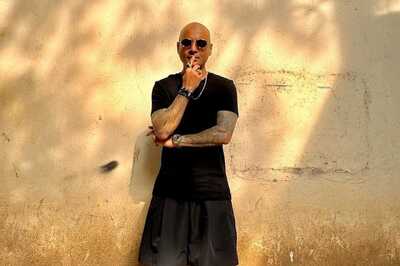
views
Biopics can be either awfully boring or captivatingly exhilarating. Julian Schnabel's (who has given us works as wonderful as The Diving Bell and The Butterfly and Miral, one of Frieda Pinto's best performances) At Eternity's Gate is a compelling look at Vincent Van Gogh's last years. Part of the ongoing 75th edition of the Venice Film Festival, the movie is yet another creative study of an individual. Earlier, Schnabel has painted the portraits of Cuban poet and novelist (Before Night Falls) and writer Jean-Dominique Bauby (The Diving Bell...). But in his latest outing, At Eternity's Gate, Schnabel's own experiences as a painter enrich the narrative, with Willem Dafoe's superb performance as Van Gogh.
What is brand new in the film is the director's creative ability to make use of the letters and other documented facts to take us into the kind of magic relationship which the painter shared with his paintings. Like so many artists in history, Van Gogh's life was a huge struggle, which the movie details.
At Eternity's Gate opens in the Paris of the late 1880s, a period noted for high art and mad lifestyles. His art-dealer brother, Theo (Rupert Friend), is not able to find buyers for Van Gogh's paintings, and when displayed in Parisian cafes, evoke very little interest. When artist Paul Gaugin advises Van Gogh to move to the south of France with its sunny skies and happier people, he heeds, leaving the grey of Paris and its unfeeling, snooty inhabitants. He settles down in Aries, where after a harsh winter, the sun begins to extend its warmth and love, pepping up Van Gogh and his art.
There are arresting images, captured by Benoit Delhomme's camera. Van Gogh's last days, his last moods and his last canvasses contrast with the leaves and flowers and grass and the sun and the skies to present an almost ethereal picture of the life and times of a great artist, who, though, was prone to bouts of horrible mood swings, a fact which fuelled speculation that he could have killed himself in July 1890. This has been rubbished by Schnabel in the movie. He says that the post-impressionist Dutch painter was shot after a fight with local youths, and he died of the wounds later.
Legendary French screenwriter Jean-Claude Carriere — who co-wrote the script with Schnabel — said there “is absolutely no proof he killed himself. Do I believe that Van Gogh killed himself? Absolutely not! He came back home with a bullet in his stomach and nobody ever found the gun or his painting materials,” Carriere added.
And why would he commit suicide? He was doing extremely well in his last days.“What we have been fighting against is the dark romantic legend of Van Gogh. In the last period of his life, Van Gogh was working constantly. Every day he made a new work,” Carriere said.“His final weeks, when he painted the Portrait of Dr. Gachet — which set a world record when it sold for $82.5 million (€77 million) in 1990 -- were not at all sad”, the writer argued.
Schnabel added that the man who had painted 75 canvases in his last 80 days could not have been suicidal. In fact, the gun he is supposed to have shot himself with was never found. He could not have buried it before collapsing! Well, legends have always been part of great men's lives, more so dark, dark legends, and Van Gogh was no exception.
(Author, commentator and movie critic Gautaman has covered the Venice Film Festival for over 15 years)




















Comments
0 comment